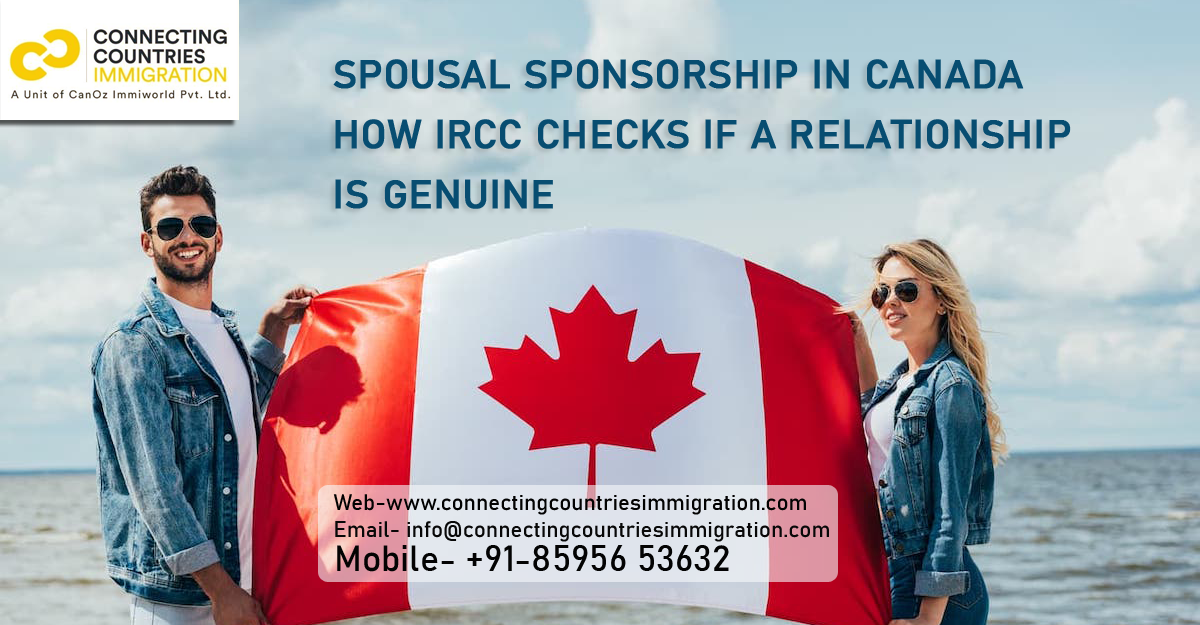Spousal Sponsorship in Canada
Spousal sponsorship in Canada: How IRCC checks if a relationship is genuine
Family reunification is one of the pillars of Canadian immigration, according to Immigration, Refugees, and Citizenship Canada (IRCC).
When you apply for family class sponsorship to bring a spouse or partner to Canada, IRCC must be satisfied that the relationship is genuine.
IRCC makes these assessments because it is possible for a foreign national to pursue a non-genuine connection with a Canadian citizen or permanent resident in order to get Canadian permanent resident status while the sponsor believes they are in a true and committed marriage or partnership. This can be emotionally and financially tough for a sponsor because they must sign an agreement to financially assist their partner for three years from the day they get permanent resident status, regardless of whether the relationship ends.
In exchange for a fee, Canadians or permanent residents may get into a business-like agreement and pretend to be in a relationship with a foreign individual.
Several documents must be submitted in an application to sponsor a spouse or partner to demonstrate a genuine relationship. If an immigration officer need additional evidence that a relationship is real, they might summon the couple to an IRCC office for an interview. They may conduct separate interviews with both the sponsor and the applicant.
If an officer is not convinced that there is a real relationship, the foreign national will be denied sponsorship.
How to prove a relationship is genuine
The government requires all couples, including same-sex couples, to present proof proving their relationship is real. The sorts of documentation required vary depending on whether the pair is married or living together as common-law in Canada.
Spouses
A married couple need the following pieces of formal documentation:
1) a completed Relationship Information and Sponsorship Evaluation Questionnaire (IMM 5532), which is included in the application package.
2) a marriage certificate
3) proof of marriage registration with a government (local, provincial, state, or national) authority
4) If the applicant or spouse was previously married, documentation of divorce is required.
5) If the major applicant and sponsor share children, long-form birth certificates or adoption records with both parents' names are required.
6) wedding invites as well as photographs
Same-sex couples whose marriage is not legally recognized in the home country of the foreign citizen must apply as a common-law relationship. When a couple has been unable to live together due to a lack of long-term visas, they may apply as a conjugal partner.
Common-law
A common-law relationship in Canada is defined as an unmarried couple who has lived together in a conjugal union for at least one year. They must submit the same documentation as married couples (with the exception of wedding images and invites), as well as:
1) Documentary evidence of financial support from the principal applicant and/or shared expenses; and
2) further evidence that the relationship is acknowledged by friends and/or family (e.g., letters from friends/family, social medical information demonstrating a public relationship)
Furthermore, for both married and common-law couples, a sponsor and principal applicant must present documentation from at least two of the following sets.
Proof of joint ownership of a residential property.
1) Both the sponsor and the major applicant are shown as occupants of a rental property in the rental agreement.
2) proof of combined utility accounts (for example, electricity, gas, telephone, and internet), joint credit card accounts, or joint bank accounts
3) vehicle insurance demonstrating that both the principal applicant and the sponsor have stated to the insurance company that they live at the insured's address.
4) Copies of government-issued documents with the same address for the principal applicant and sponsor (e.g., driver's licenses)
5) other documents sent to the lead applicant and sponsor, whether or not the accounts are owned jointly (e.g., mobile phone bills, salary stubs, tax forms, bank or credit card statements, insurance policies)
Couples must provide a thorough written explanation if they are unable to present at least two of these papers.
Proving cohabitation
Couples can demonstrate that they have been living together as conjugal partners in Canada by providing the following documents:
1) Credit cards or shared bank accounts
2) residential property co-ownership
3) shared residential leases
4) invoices for joint rental
5) Accounts for shared utilities (electricity, gas, and telephone)
6) combined household expenditure management
7) proof of collaborative purchases, particularly of home goods
8) correspondence to one or both parties at the same address
9) Identification cards, driver's licenses, and insurance policies are examples of vital paperwork from both parties that display the same address.
10) home duties, shared responsibility for household management
11) telephone call history
If the couple is not living together in Canada, they must provide evidence that they previously lived together for at least one year by presenting:
1) Evidence of interaction may include letters, printed text messages, email, social media dialogues, or other records demonstrating communication. This should be no more than ten pages.
2) Flight tickets or boarding cards, as well as passport photocopies with stamps, are proof that the Canadian citizen or permanent resident has visited their partner. If no visits were made, the sponsored individual must explain why in Part C, question 4 of the IMM 5532 questionnaire.

Comments
Post a Comment